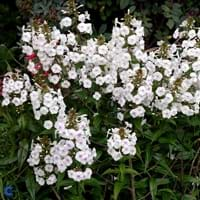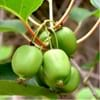Life Span
Perennial
Perennial
Type
Fruit
Flowering Plants
Origin
Eastern Asia
United States, Northeastern United States, Mid-Atlantic United States, Southeastern United States, Central United States, South-Central United States
Types
Actinidia arguta, Actinidia giraldii, Actinidia hypoleuca
Not Available
Number of Varieties
Not Available
Habitat
Dappled Shade, open Woodlands
Loamy soils, meadows, moist forests
USDA Hardiness Zone
3-8
5-8
Sunset Zone
1a, 1b, 2a, 2b, 3a, 3b, 4, 5, 6, 7, 8, 9, 14, 15, 16, 17, 18, 19, 20
1a, 1b, 2a, 2b, 3a, 3b, 4, 5, 6, 7, 8, 9, 10, 11, 12, 13, 14, 18, 19, 20, 21, 22, 23
Habit
Vining/Climbing
Upright/Erect
Flower Color
White, Ivory
White, Pink, Lavender, Violet
Flower Color Modifier
Bicolor
Bicolor
Fruit Color
Green, Yellow green
Not Available
Leaf Color in Spring
Green, Dark Green
Green, Dark Green
Leaf Color in Summer
Dark Green
Dark Green
Leaf Color in Fall
Dark Green
Dark Green
Leaf Color in Winter
Light Green
Not Available
Plant Season
Spring, Summer, Fall
Summer
Sunlight
Full Sun, Partial Sun
Full Sun, Partial Sun, Partial shade
Growth Rate
Medium
Medium
Type of Soil
Loam
Clay, Loam
The pH of Soil
Neutral
Acidic, Neutral, Alkaline
Soil Drainage
Well drained
Average
Bloom Time
Spring, Late Spring, Early Summer
Early Summer
Tolerances
Shade areas
Not Available
Where to Plant?
Ground, Pot
Container, Ground
How to Plant?
Grafting, Stem Cutting
Seedlings, Transplanting
Plant Maintenance
Low
Medium
Watering Requirements
Average Water Needs, Requires regular watering
Do Not over Water, Keep ground moist
In Summer
Regular watering required
Lots of watering
In Spring
Moderate
Moderate
In Winter
Average Water
Average Water
Soil pH
Neutral
Acidic, Neutral, Alkaline
Soil Type
Loam
Clay, Loam
Soil Drainage Capacity
Well drained
Average
Sun Exposure
Full Sun, Partial Sun
Full Sun, Partial Sun, Partial shade
Pruning
Remove damaged leaves, Remove dead branches, Remove dead leaves
Remove damaged leaves, Remove dead branches, Remove dead leaves
Fertilizers
Apply 10-10-10 amount, fertilize twice a year
All-Purpose Liquid Fertilizer, Apply 10-10-10 amount
Pests and Diseases
Botrytis head rot, Japanese Beetles, Leaf Rollers, Nematodes, Phytophthora, Root rot, Sclerotinia blight, Spider mites, Thripes
Leafhoppers, Pink Root, Powdery mildew, Red blotch
Plant Tolerance
Shade areas
Drought
Flower Petal Number
Single
Single
Foliage Texture
Medium
Medium
Foliage Sheen
Glossy
Glossy
Attracts
Cats
Hummingbirds, Butterflies
Allergy
Not Available
allergic conjunctivitis, breathing problems, Irritate the mucus membrane
Aesthetic Uses
Cottage Garden
Beautification, Cottage Garden
Beauty Benefits
Not Available
Improve skin tone, Restores Hair Colour, Skin cleanser
Environmental Uses
Shadow Tree
Air purification, Increases moisture in air, Prevent Soil Erosion
Medicinal Uses
Antioxidants, Fiber, Folate, Rich in Potassium, Vitamin C
Aging, Antispasmodic
Part of Plant Used
Fruits
Leaves
Other Uses
Grown for shade
Air freshner, Cosmetics, Making Sweet Scented Oil
Used As Indoor Plant
No
No
Used As Outdoor Plant
Yes
Yes
Garden Design
Edible, Feature Plant, Vine
Cutflower, Mixed Border
Botanical Name
ACTINIDIA arguta
PHLOX maculata
Common Name
Hardy Kiwi
Meadow Phlox
In Hindi
हार्डी कीवी
मैदानी एक प्रकार का पौधा
In German
Hardy Kiwi
Wiese Phlox
In French
kiwai
Meadow Phlox
In Spanish
kiwi hardy
prado Phlox
In Greek
σκληραγωγημένα ακτινίδια
Meadow Phlox
In Portuguese
kiwi Hardy
Meadow Phlox
In Polish
hardy kiwi
łąka Phlox
In Latin
Hardy kiwi
Phlox meadow
Phylum
Magnoliophyta
Magnoliophyta
Class
Magnoliopsida
Magnoliopsida
Family
Actinidiaceae
Polemoniaceae
Clade
Angiosperms, Asterids, Eudicots
Not Available
Tribe
Not Available
Not Available
Subfamily
Actinidiaceae
Not Available
Number of Species
Not Available
Not Available
Importance of Hardy Kiwi and Meadow Phlox
Want to have the most appropriate plant for your garden? You might want to know the importance of Hardy Kiwi and Meadow Phlox. Basically, these two plants vary in many aspects. Compare Hardy Kiwi and Meadow Phlox as they differ in many characteristics such as their life, care, benefits, facts, etc. Every gardener must at least have the slightest clue about the plants he wants to plant in his garden. Compare their benefits, which differ in many ways like facts and uses. The medicinal use of Hardy Kiwi is Antioxidants, Fiber, Folate, Rich in Potassium and Vitamin C whereas of Meadow Phlox is Aging and Antispasmodic. Hardy Kiwi has beauty benefits as follows: Not Available while Meadow Phlox has beauty benefits as follows: Not Available.
Compare Facts of Hardy Kiwi vs Meadow Phlox
How to choose the best garden plant for your garden depending upon its facts? Here garden plant comparison will help you to solve this query. Compare the facts of Hardy Kiwi vs Meadow Phlox and know which one to choose. As garden plants have benefits and other uses, allergy is also a major drawback of plants for some people. Allergic reactions of Hardy Kiwi are Not Available whereas of Meadow Phlox have allergic conjunctivitis, breathing problems and Irritate the mucus membrane respectively. Having a fruit bearing plant in your garden can be a plus point of your garden. Hardy Kiwi has no showy fruits and Meadow Phlox has no showy fruits. Also Hardy Kiwi is not flowering and Meadow Phlox is not flowering . You can compare Hardy Kiwi and Meadow Phlox facts and facts of other plants too.





